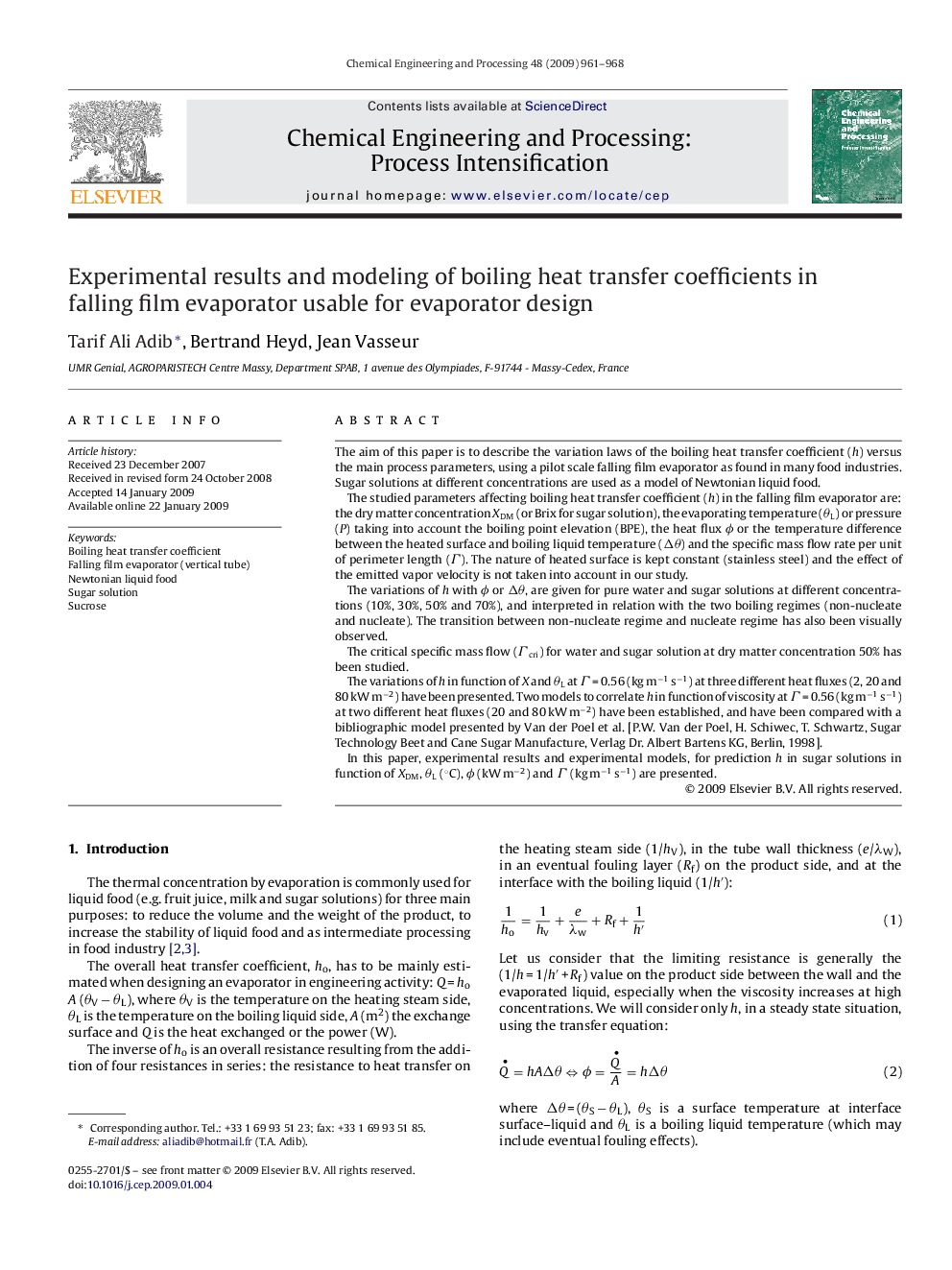| کد مقاله | کد نشریه | سال انتشار | مقاله انگلیسی | نسخه تمام متن |
|---|---|---|---|---|
| 688485 | 889455 | 2009 | 8 صفحه PDF | دانلود رایگان |

The aim of this paper is to describe the variation laws of the boiling heat transfer coefficient (h) versus the main process parameters, using a pilot scale falling film evaporator as found in many food industries. Sugar solutions at different concentrations are used as a model of Newtonian liquid food.The studied parameters affecting boiling heat transfer coefficient (h) in the falling film evaporator are: the dry matter concentration XDM (or Brix for sugar solution), the evaporating temperature (θL) or pressure (P) taking into account the boiling point elevation (BPE), the heat flux ϕ or the temperature difference between the heated surface and boiling liquid temperature (Δθ) and the specific mass flow rate per unit of perimeter length (Γ). The nature of heated surface is kept constant (stainless steel) and the effect of the emitted vapor velocity is not taken into account in our study.The variations of h with ϕ or Δθ, are given for pure water and sugar solutions at different concentrations (10%, 30%, 50% and 70%), and interpreted in relation with the two boiling regimes (non-nucleate and nucleate). The transition between non-nucleate regime and nucleate regime has also been visually observed.The critical specific mass flow (Γcri) for water and sugar solution at dry matter concentration 50% has been studied.The variations of h in function of X and θL at Γ = 0.56 (kg m−1 s−1) at three different heat fluxes (2, 20 and 80 kW m−2) have been presented. Two models to correlate h in function of viscosity at Γ = 0.56 (kg m−1 s−1) at two different heat fluxes (20 and 80 kW m−2) have been established, and have been compared with a bibliographic model presented by Van der Poel et al. [P.W. Van der Poel, H. Schiwec, T. Schwartz, Sugar Technology Beet and Cane Sugar Manufacture, Verlag Dr. Albert Bartens KG, Berlin, 1998].In this paper, experimental results and experimental models, for prediction h in sugar solutions in function of XDM, θL (°C), ϕ (kW m−2) and Γ (kg m−1 s−1) are presented.
Journal: Chemical Engineering and Processing: Process Intensification - Volume 48, Issue 4, April 2009, Pages 961–968